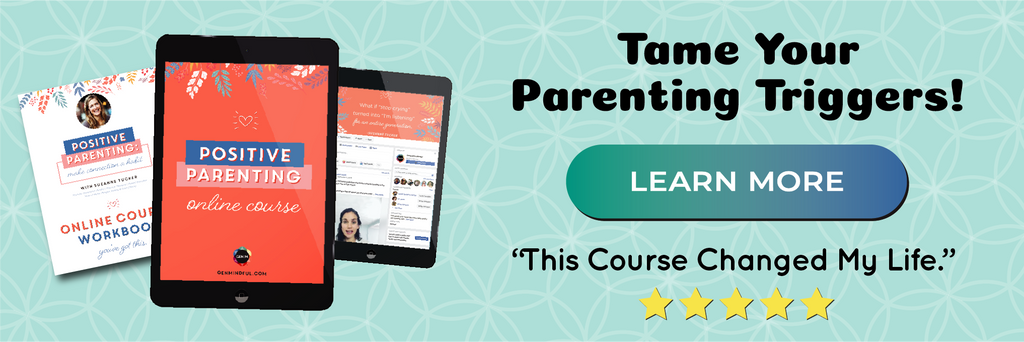
Children bring so many different emotions to the first week of school: excitement and anticipation, fear and wonder. Parents can hold space for their child’s emotions and prepare them for school at home, surrounding their aloneness and uncertainty with connection and familiarity. Meeting their new teacher and peers, fumbling through directions, figuring out lunch seating and new rituals can become less overwhelming with these 5 tools ...
5 Tools To Ease School Transitions
1. Create Time-In RitualsBefore your child starts school, come together in a Time-In space, giving them the opportunity to share how they feel about starting school, which parts feel exciting, and which feel scary.
If your child has already experienced their first day, a Time-In ritual is still useful for a before-school feelings check-in to help name and tame any big emotions before they leave home.
After school or at the end of each day, come together to the Time-In space to relax, recharge and revisit parts of their day. When did they feel …
- Yellow: Happy, brave, silly, surprised?
- Blue: Tired, sad, lonely, disappointed, embarrassed?
- Red: Mad, frustrated, disappointed, confused, scared?
- Green: Calm, grateful, relaxed, caring?
Share your day with them too!
2. Write A Scripted StoryWhat is more fun than starring in your very own story!
A scripted story is a short, descriptive narrative that helps children transition into new, scary, or confusing situations, helping them understand expectations and social cues/rules, and can be used as a tool to address challenging behaviors and teach new skills.
Through storytelling, the fears and unknowns around a situation are removed by sequencing the events in a playful way. Children often move from their right emotional brain as they develop the skills of the logical left brain and these stories help to integrate both parts of the brain so that your child can connect to and process their emotions around what is happening. This form of co-regulation calms their nervous system as they think about going to school.
3. Announce TransitionsWhen children know ahead of time what is going to happen, and what won’t happen, they have the opportunity to process their thoughts and feelings around it, and can better prepare for what is coming.
Talk to your child about what school will look like in simple, concrete terms. What are the names of their teachers? What will the morning routine at home look like? What will they need to put in their backpack each day? How will they get to school? What will they eat for lunch? How will they get home?
A useful tool for helping your child process these transitions in a concrete way is to use a visual chart. Together, take pictures of your child doing each task or print some from the internet, creating a visual timeline for your child. This helps prime your child to know what to expect, stay on task, and creates a sense of safety during a new, and possibly unsettling time. This can also be done to create a predictable before and after-school routine.
4. Practice Lagging SkillsNotice if your child has lagging skills that affect his or her ability to meet school expectations. For example, does she struggle with emotional regulation? Is impulse control hard for him? Or maybe social situations - such as making friends or talking to peers - are difficult? Practice these skills in the safety of your home through ritual and play.
Here are some games to try with your child to teach various social-emotional skills:
- Telephone - Teaches impulse control, focus, and listening intently
- Simon Says - Teaches body awareness, motor development, following and giving directions, sequencing
- Red Light, Green Light - Teaches impulse control, self-awareness, self-management, focus
- Freeze Tag - Teaches coordination, emotional resiliency, self-control, social skills, problem-solving
- Mother May I - Teaches taking turns, self-awareness, social skills, emotional regulation, impulse control, problem-solving, communication skills
They say practice makes perfect. I am unsure, but I do know practice creates more comfort. Role-play various scenarios with your child, especially those he/she feels uncertain about or those that surround lagging skills. This gives children the opportunity to act out real-life situations to problem solve, practice social skills, and build an image of what something might look or feel like when it actually happens.
It can take up to six weeks or more for a child to adjust to a new school year. Increased meltdowns, regressions, or entering shut down mode is not abnormal as their body adjusts to the changes. Yet, with connection and guidance, they will move through this transition more easily and build their resilience and grit along the way!
• • •
Generation Mindful creates educational tools, toys, and programs that nurture emotional intelligence through play and positive discipline.
Join us and receive positive parenting tools and support in your inbox each week.











